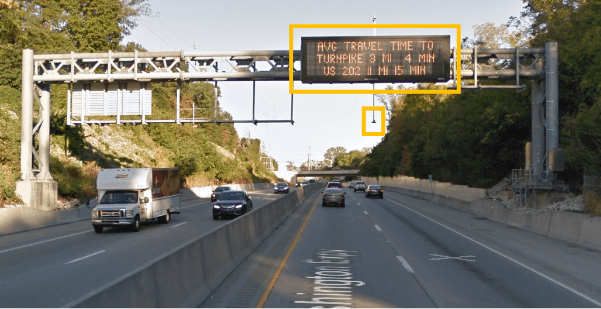How Do Those Travel Time Message Signs Work?

Timothy P. Reilly, P.E.,, Civil Engineer
One of the main goals of implementing Intelligent Transportation System (ITS) solutions on our roadway network is to help facilitate “smarter” roadway users. An example of this is when a Dynamic Message Sign (DMS) will display average travel times to upcoming exits or destinations with the goal of providing savvy roadway users a data point for them to consider alternate routes if the one ahead seems too slow given the current traffic conditions.
It is one of my favorite ITS applications, even when it is warning me of a major slowdown on 76 on my way down the shore.
But how do they work?
Typically, it is a very simple process of detecting when specific cars pass by point A, detecting when those same cars pass point B, and displaying the average time elapsed. One common detection method is with toll tag readers. A toll tag reader near the DMS will detect a toll transponder (from a provider such as “E-ZPass”), assign an anonymous alphanumeric identifier not associated with the account of that operator, and then detect when that same transponder arrives at the downstream tag reader.
The DMS will display the average travel time for a pool of vehicles, but it will be capped at a travel time that corresponds to traveling the speed limit. People already are tempted to “beat the time” displayed on these signs and on their GPS-provided ETA, so there is no need to encourage more speeding.


